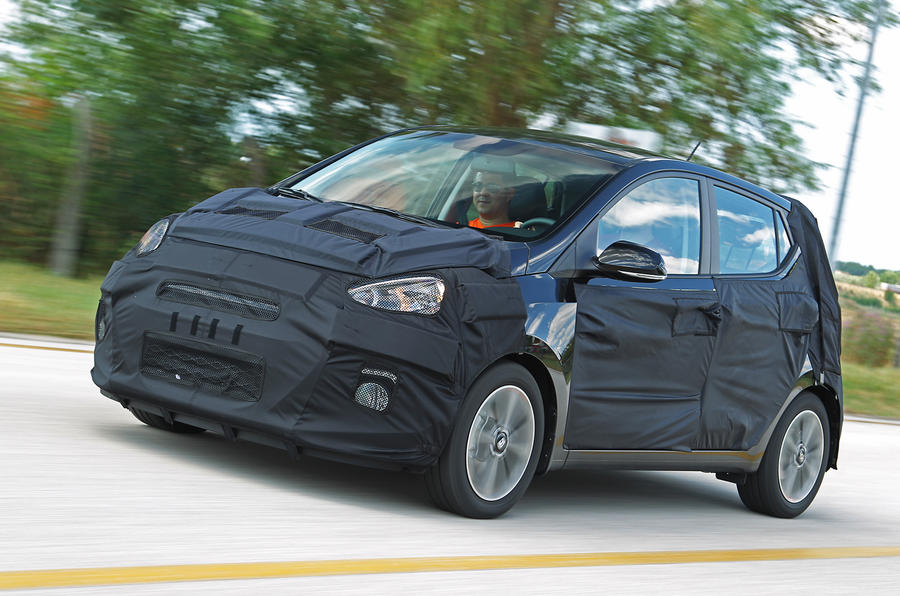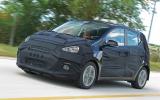We were granted access to two versions of the Hyundai i10 on our trip to the Izmit factory: an entry-level three-cylinder 1.0-litre and a higher-powered 1.25 four-pot.
Final power outputs are still to be confirmed, but since both these engines are carried over from the previous generation, expect around 68bhp and 84bhp respectively. There may also be a higher-powered four-cylinder 1.0-litre at launch, but Hyundai says there are no plans for a diesel in the range at the moment.
The 1.0-litre car displayed quick throttle response with good acceleration from low revs. There was a lot less engine noise than expected, too, evidencing the considerable effort Hyundai has put into improving the mechanical refinement of its engines.
We were limited on speed during our short test run, but power felt forthcoming through all five gears, with very few flat spots. The manual transmission coped well, and gears seemed nicely spaced.
The ride was comfortable, with little body roll in corners. Hyundai has chosen new suspension hardpoints for the i10, and the effect shows, especially under braking. The old model was noted for its tendency to dive forward under heavy stopping force, but there’s been considerable improvement in this regard.
The steering has been retuned, too, with new side load springs being used with the aim of improving feel. Our test route only had one major corner, so definitive statements about feel would be unjustified. That said, in the short time we had with the car the helm felt light, but also nicely weighted under load.
As far as maturity goes, the interior of the new i10 marks a big step up over the old model, providing a more premium feel with plenty of soft-touch furnishings. The driving position is higher than in some rivals, but never compromisingly so, and the seats themselves are comfortable and supportive all round.
Standard equipment on the new i10 is also something Hyundai has worked to improve. As well as safety features like stability control, tyre pressure monitors and six airbags, the standard car will pack in plenty of entertainment kit including auxiliary and USB inputs, two 12V power points and a central multimedia display.





















Join the debate
Add your comment
Better stance
The current i10 is not bad looking for a city car but it has an overly tall stance.
The new car looks wider and lower. No surprises in the engine line-up though.